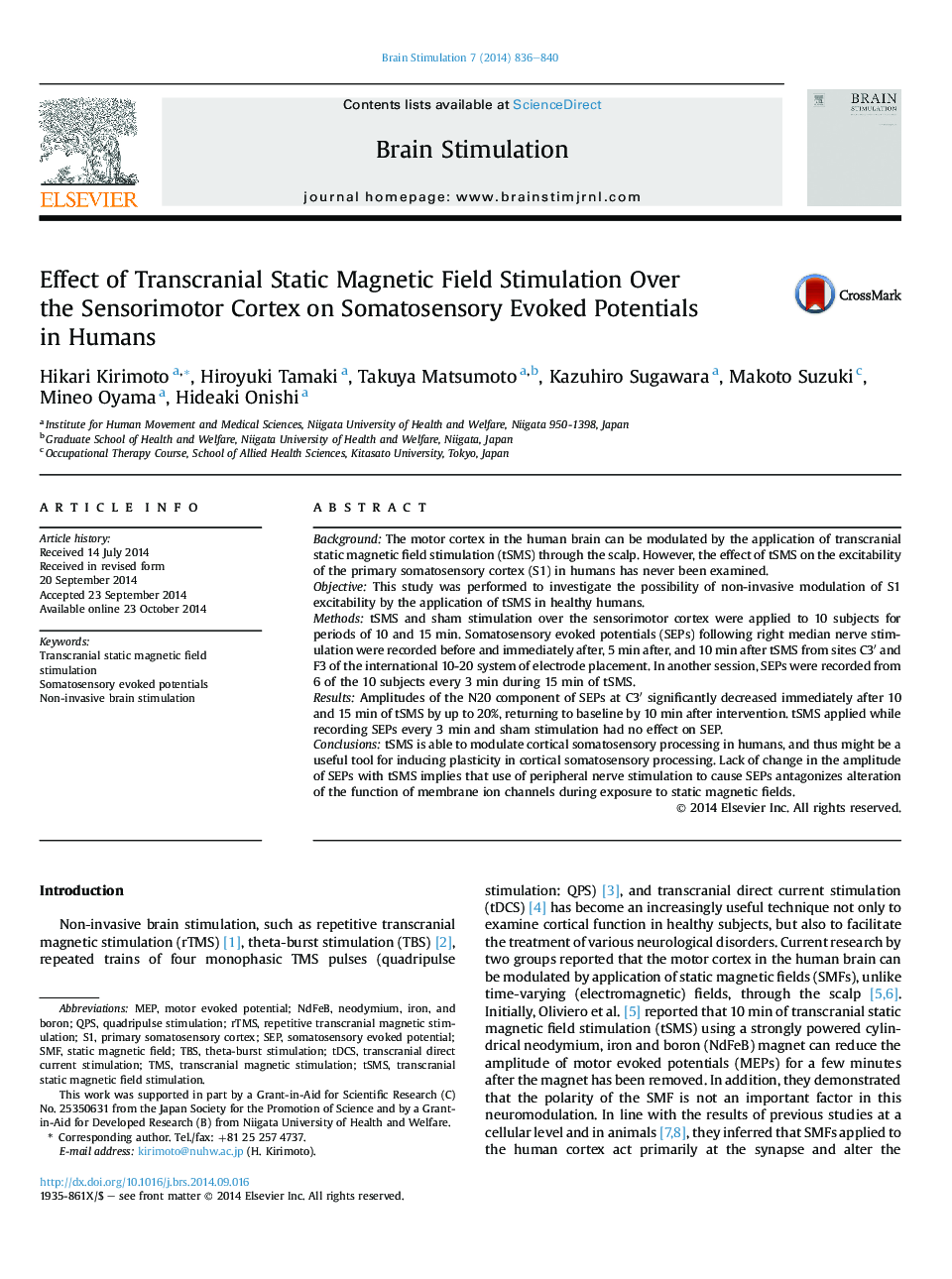| Article ID | Journal | Published Year | Pages | File Type |
|---|---|---|---|---|
| 6005394 | Brain Stimulation | 2014 | 5 Pages |
â¢For tSMS, NdFeB magnet was settled over the sensorimotor cortex.â¢Amplitudes of the SEP at C3' significantly decreased after tSMS by up to 20%.â¢tSMS might be a useful tool for inducing plasticity in somatosensory processing.
BackgroundThe motor cortex in the human brain can be modulated by the application of transcranial static magnetic field stimulation (tSMS) through the scalp. However, the effect of tSMS on the excitability of the primary somatosensory cortex (S1) in humans has never been examined.ObjectiveThis study was performed to investigate the possibility of non-invasive modulation of S1 excitability by the application of tSMS in healthy humans.MethodstSMS and sham stimulation over the sensorimotor cortex were applied to 10 subjects for periods of 10 and 15Â min. Somatosensory evoked potentials (SEPs) following right median nerve stimulation were recorded before and immediately after, 5Â min after, and 10Â min after tSMS from sites C3â² and F3 of the international 10-20 system of electrode placement. In another session, SEPs were recorded from 6 of the 10 subjects every 3Â min during 15Â min of tSMS.ResultsAmplitudes of the N20 component of SEPs at C3â² significantly decreased immediately after 10 and 15Â min of tSMS by up to 20%, returning to baseline by 10Â min after intervention. tSMS applied while recording SEPs every 3Â min and sham stimulation had no effect on SEP.ConclusionstSMS is able to modulate cortical somatosensory processing in humans, and thus might be a useful tool for inducing plasticity in cortical somatosensory processing. Lack of change in the amplitude of SEPs with tSMS implies that use of peripheral nerve stimulation to cause SEPs antagonizes alteration of the function of membrane ion channels during exposure to static magnetic fields.
